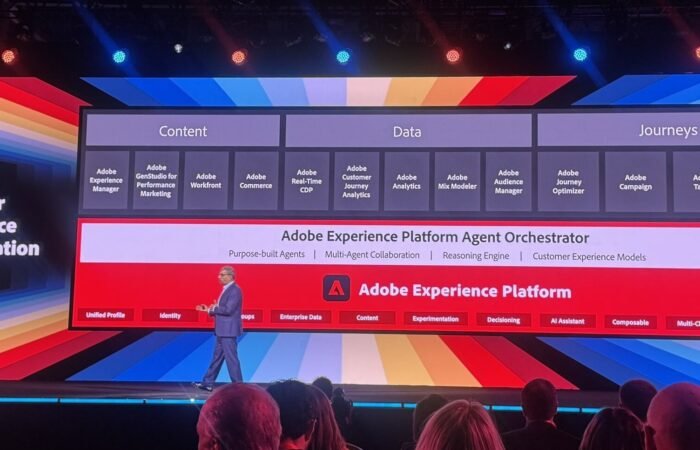Today’s blog might seem to veer away from business and technology, but hear us out. We’re exploring another side of leadership and how taking risks, acting swiftly, and partnering up with a supportive team can not only help you achieve your goals, but drive them toward that finish line quicker.
Innovation, motivation, self-discipline, perseverance, and strategic planning are crucial qualities for success but without a proper support system, you can lose your way.
Stop procrastinating … right now
In the current economic climate, many find themselves risk averse and are just trying to maintain their status quo. But we’re here to tell you that hitting the breaks on progress may not be a great idea. Don’t believe us?
When one of Content Bloom’s founders, Nickoli Roussakov, isn’t spearheading CB’s delivery department, he’s living out his lifelong dream of racing cars and he says there’s no time like the present to get moving on your goals.
(The same can be said of business. Now is the time to act and the first step is finding the right partner and support team to keep you on track.)
Read on to learn more about how a first-time Calabogie Cup Weekend racer found his inspiration and sped his way to a spot on the winner’s podium, even after a few setbacks and a severe back injury.

Tell us a bit about Calabogie and what it’s all about.
NR: The Calabogie Cup Weekend is a national race cup weekend. They do it once a year and there all different classes of cars. It’s essentially a 2-day race weekend, with multiple races per day.
Your racecar is wild. Where did you find it?
NR: The make is called Radical SR3 by Radical Sportscars, a British manufacturer. It’s a production race car and it’s designed to go fast.
What is the speed like in one of those things?
NR: It’s insanely fast and a very grippy machine. You need to trust the aerodynamics because the speed potential through the corners is really high. It’s really interesting when you check the data graph and compare it against my local competitor’s *TA2 Camaro (Nascar style car), which is a very different type of car, but with very similar lap times as the Radical.
I have about 215 horsepower, and the Camaro is about 550. Think of it like this, the Radical is very lightweight and, with its high aerodynamics, can go about 240 km/h – not a high top speed, but very fast through the corners. At our local track, Atlantic Motorsports Park, I only go about 186 km/h (116 mph) top speed, whereas the TA2 Camaro goes 197 km/h (112.5 mph), yet our laps are near identical in time!

Let’s talk about the DNA-based driver training plan you did with Athletigen.
NR: The whole idea with Athletigen is to use DNA-based insights to get to your athletic goals faster and in a way that prevents injuries based on ones individual vulnerabilities. For instance, if you want to be a better marathon runner but your body is built for strength and power, you have to train differently than someone who is naturally better at running long distances. We’re applying these DNA-based insights to performance driver training.
It’s a method that helps NHL players a lot. Athletigen works with a lot of professional athletes to build a personalized program and nutrition reports centered around their own DNA, genetic composition, and environmental factors. Knowing that type of information can help you focus your training and prevent injury from over-training.
Check out this Onboard footage of race 1 where Nick is behind Leigh Pettipas in this one, and eventually finds a path to sneak by around halfway through the race.
What was your experience like? Did a DNA-based program help you get to a certain level of athleticism?
NR: Nutrition is a big aspect of this program. I made some tweaks based off my nutrition report, lost almost 20 pounds in a few weeks, and got down to the perfect racing weight naturally. I didn’t do much except make some small tweaks to what I eat and how much of based on that report. Weight is really important when racing. I also had to do more exercises specific to driving the car for longer periods of time – more emphasis on strength of my back, neck and shoulders, as well as the mental game – ability to stay focused throughout the race. I have an entire list of special exercises for racing.
Didn’t you have a severe back injury? How do you overcome something like that?
NR: Being educated about injury, having the right nutrition, not overloading myself when prepping the car, and knowing what type of exercises to do. I had to learn how to manage and restructure the way I did things, like working under the hood of the car for too long in odd positions.
Did you experience any setbacks along the way?
NR: Sometimes all you have are setbacks, right? The littlest thing can throw off your race. You’ve just got to work through that and not give up. Shane’s (Shane Spudik, a fellow local racer from New Brunswick and Calabogie Cup Weekend) crank position sensor failed in the last 45 minutes of the race. This tiny $12-dollar part failed on him and it was over. One changing variable can throw your entire race. The key is to stay composed and do the right thing in the moment where it’s easy to panic.
How do you stay positive when something like that happens?
NR: You just have to want it really, really badly.

Does having a crew and a good support system help with that motivation?
NR: Support is super important. There are places in motorsport where people aren’t as friendly as they are in Nova Scotia. At home, everybody tries to help each other out. If someone else has that sensor, they’ll gladly let you borrow it from them. We spend a lot of time in the shop and you meet like-minded people. Everyone has to maintain a racecar and not everyone has the money, so you end up helping each other out. You share little tricks and tips.
For example, Ben Easson (a really good friend and a very competitive racer) wired my old racecar for me on his own accord. He had the skills and just offered up his time because he wanted to see me succeed. Just like the fastest guy out here, Leigh (Pettipas), who is a racecar engineer for one of Ferrari’s racing teams and races out here locally in the Pro Stock Monte Carlo (not for Ferrari). He helped me a lot with little tips and tricks on how to analyze data and be more efficient to better prep my car. And then I beat him in a race and he was happy and supportive when I won!
Community support and family support is so important. With COVID-19, as I departed for the Calabogie Cup in Ontario, I was saying goodbye to my family for 3 weeks, because I needed to self-isolate for 2-weeks when I got back. I was going to cancel the trip, but my wife and family encouraged me to stick to the plan and we decided I would go. It’s not possible without having support like that; her being fully bought into this.
If you could time travel back in time, what piece of advice would you give your younger self?
NR: Don’t spend so much time buying so many different cars and messing around with cars that shouldn’t be racecars. Just get a good racecar to start with; a good one that’s reliable. Also, just do it. In my 20s, I knew racing and the track existed but I didn’t know how much it would cost and I didn’t think I could afford it, so I didn’t do it. You know how it is; you just put it on the back burner and don’t do it. Once I got into it, I saw people who were doing it in a very-budget effective, smart way. Don’t wait to do it, do it now! I started this in 2014 and I should have started it earlier.
“You need to be realistic with yourself and buy the right parts that will get you on the track. You don’t want to end up with a broken car sitting in your garage for 15 years, with nothing but a dream to chase.”
What pushed you toward that transition. What turned that dream into a goal?
NR: I started by going to the motorsport club monthly meetings. You go there, you meet people, they ask you what your interests are, and they give you tips like who to talk to in the community and how to get started. And that’s all. But it took me ten years to get up and go to that club meeting. Ten years to go to a meeting!

Do you need a certain level of patience, resilience, and leadership to pursue a racing career?
NR: You need to be realistic with yourself and buy the right parts that will get you on the track. You don’t want to end up with a broken car sitting in your garage for 15 years, with nothing but a dream to chase. There is a bad saying out there, “Don’t tell your wife what parts actually cost.” I don’t agree with that. You have to account. Budgeting is a super important part of it. You have to be smart, dedicated, and disciplined or it can end up costing you a lot with very little in return. It can end up costing you a lot either way, but it will cost you more if you aren’t smart about it.
What’s your favorite part of racing?
When you get out on the grid, you’re still pretty nervous. Once that green flag drops, you get overtaken with adrenaline and you become one with your car. It’s crazy, you get this red mist in your eyes and it’s just this incredible, intense, and euphoric feeling.
My favorite feeling is when I’m chasing somebody down; you get them and then you get the next guy and the next guy.
Another one is having a battle on the track and you’re just duking for position. It doesn’t even matter who wins in the end, it’s the thrill of the battle. Then you shake your competitor’s hand and you’re like, “That was amazing. You were great!” It’s absolutely euphoric, you feel like brothers.
Watch the footage from Nick’s first race in the Calabogie Cup, where he finished 4th.
You found your way to the podium! A 3rd place win at Calabogie Cup Weekend and set some local track records.
NR (jokingly referring to drivers, Aaron and Leigh, in their big, American muscle V8s): The Bald Eagle Freedom Brothers stomped all over me off the start. But once the Athletigen performance insights kicked in, I composed myself and had a mind-blasting race, yielding 2nd place in GT1 class and Overall.
Much of the same ensued for race 2, except my tires were even more dead now. The mightiest V8 didn’t have the rubber to run all the races, but I scooped up the chequered for the remaining 3 of 5 races in the day.
This was also my first chequered ever, so I’m pretty happy about that. Huge thanks to Chris Salmon for his excellence with tech. Also a big thanks for Leigh for all his help, advice, and parts. Also thanks to Lucas and Ingo of Atlantic Racing Team and Robert Burgess, President of Radical Canada.

Congrats, Nick!
For photo highlights from Calabogie Cup Weekend, click here.





